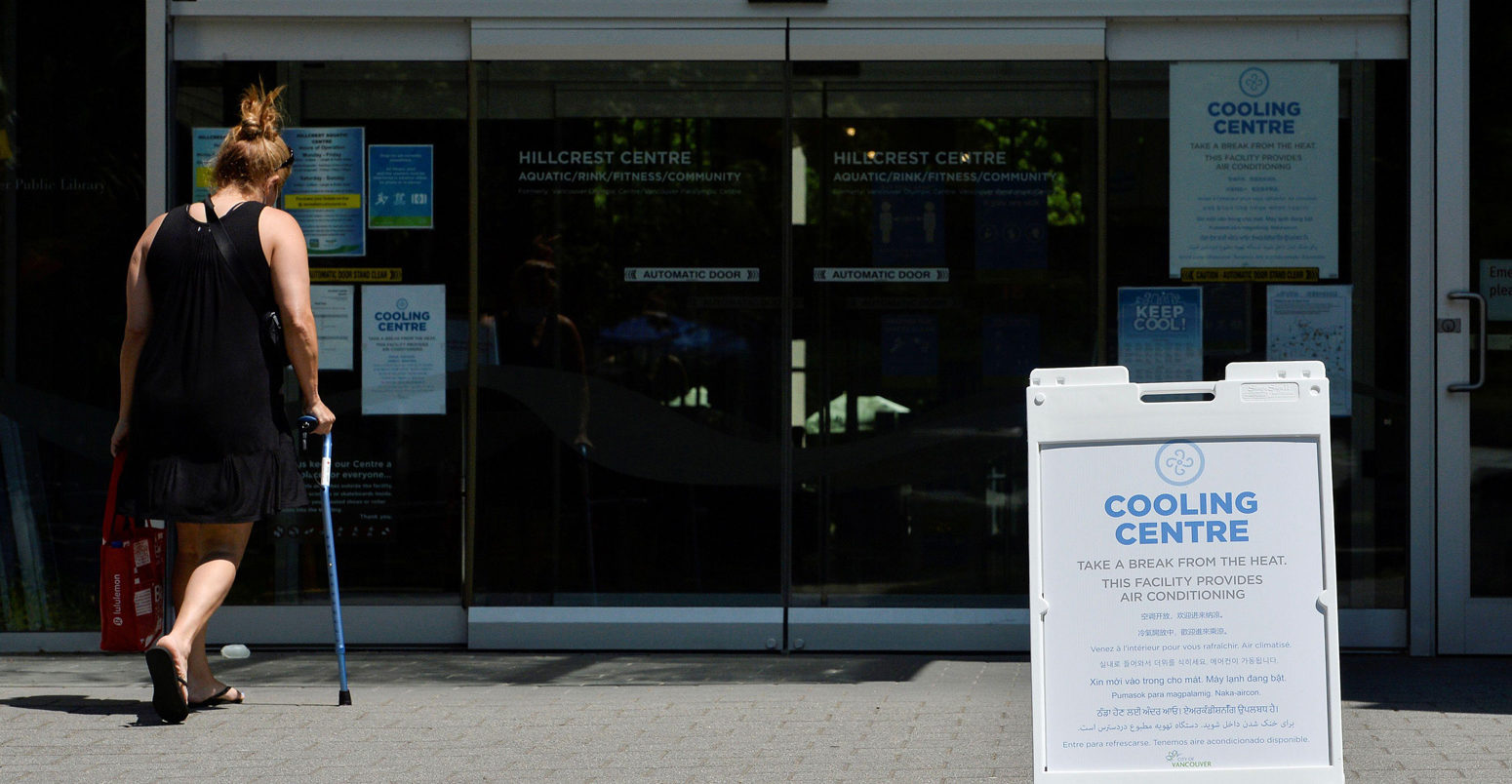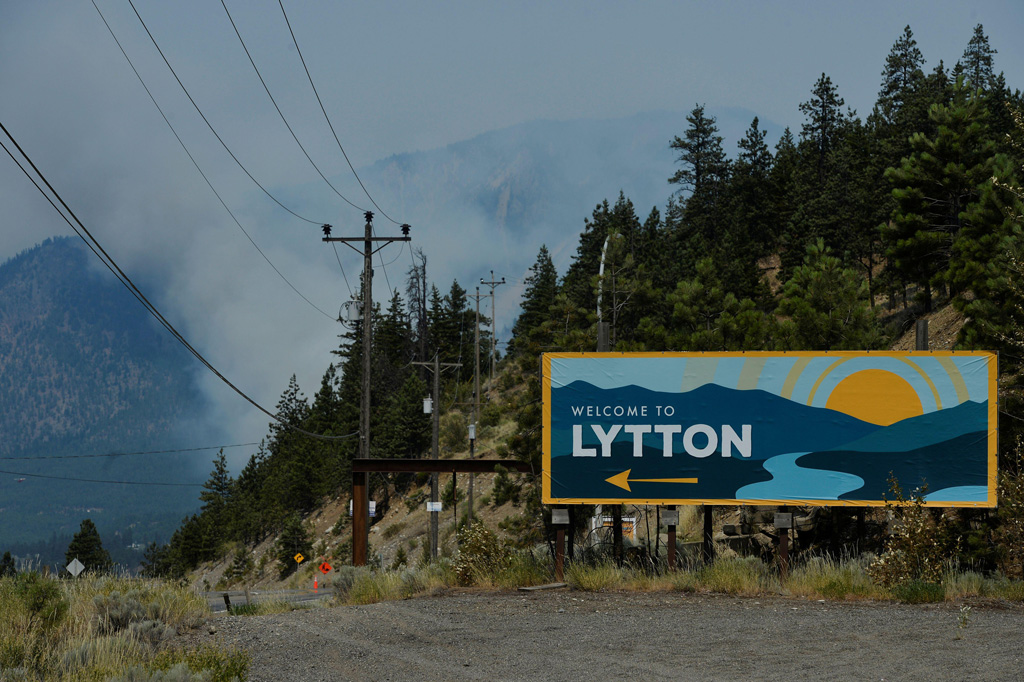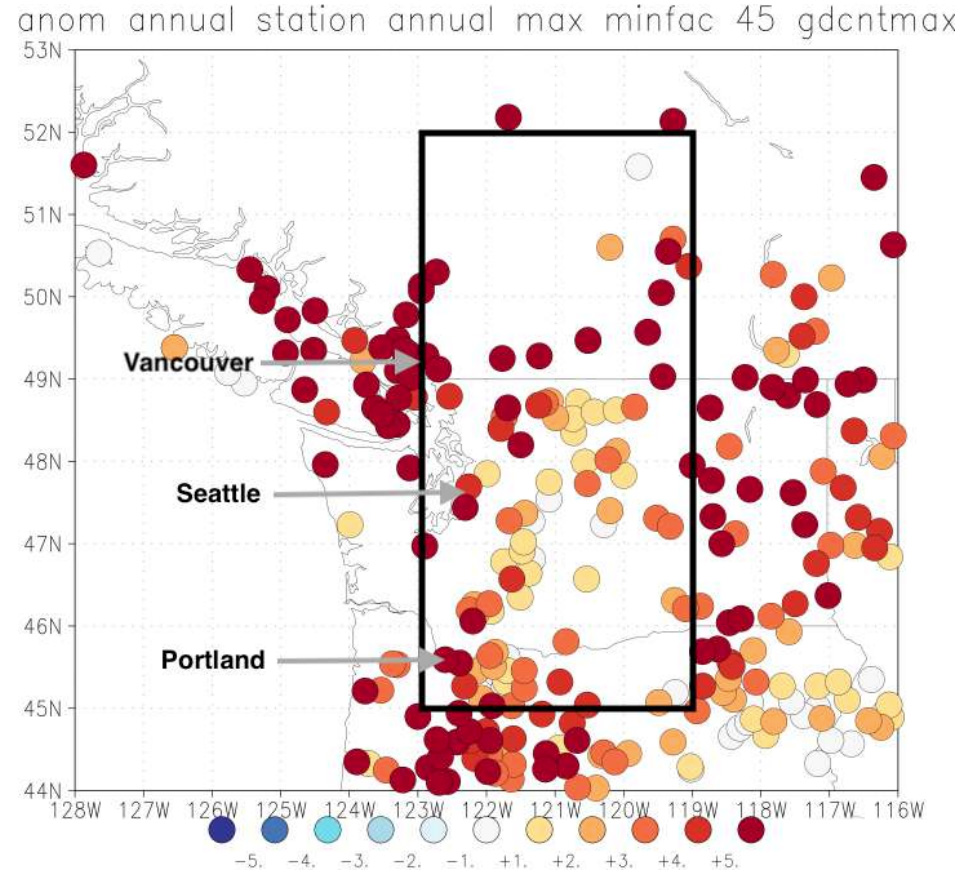
Pacific north-west heatwave shows climate is heading into ‘uncharted territory’
Robert McSweeney
07.07.21Robert McSweeney
07.07.2021 | 11:00pmThe deadly heatwave that hit north-western US and Canada in late June would have been “virtually impossible” without human-caused global warming, a new “rapid-attribution” study finds.
The event, which saw temperature records shattered by as much as 5C, has been linked to hundreds of deaths in the Pacific north-west region.
The heatwave was “so extreme” that the observed temperatures “lie far outside the range” of historical observations, the researchers say. Their assessment suggests that the heatwave was around a one-in-1,000-year event in today’s climate – and was made at least 150-times more likely because of climate change.
The analysis also finds that, if global warming were to hit 2C, a heatwave as extreme as seen last month would “occur roughly every five to 10 years” in the region.
While the severity of the event could be “really bad luck, albeit aggravated by climate change”, another possible explanation is that “non-linear interactions in the climate have substantially increased the probability of such extreme heat”.
These findings “provide a strong warning”, the researchers say – that a “rapidly warming climate is bringing us into uncharted territory with significant consequences for health, well-being and livelihoods”.
The analysis, led by the World Weather Attribution (WWA) scientific consortium, is the latest in a string of attribution studies linking human-caused climate change to record-breaking heatwaves in Siberia, Japan, the UK and France over recent years.
Record-breaking
In the last week of June, an extreme heatwave developed over the Pacific north-west, shattering records in multiple cities by several degrees Celsius.
All-time temperature records were broken in Portland – on three consecutive days, reaching 46.7C – as well as in Seattle (reaching 42.2C). These records were 5.0C and 2.8C higher than the previous records, respectively, the new analysis notes.
In Canada, the village of Lytton broke the all-time record for Canada three times, peaking at 49.6C. The village was largely destroyed by wildfires in the days that followed. In Vancouver, temperatures reached 41.4C – 3.8C hotter than the previous record. The heat resulted in flooding across parts of the city as melting snow on upstream mountains brought a rapid rise in river levels.

Observed data from the Copernicus Climate Change Service also indicates that the past month was the warmest June on record for North America.
The extreme heat led to a spike in emergency calls and hospitalisations across the US and Canada, and has been linked to at least several hundred extra deaths. Infrastructure also felt the heat, with power cables and road surfaces melting in the extreme conditions.
(For a full round-up of last month’s event, see Carbon Brief’s media reaction piece.)
The heatwave even hit “one whole month before the climatologically warmest part of the year” in late July and early August, the authors say, making it “particularly exceptional”.
The immediate cause of the event was a “slow-moving, strong high-pressure system, sometimes called Omega-blocking or a ‘heat-dome’”, the researchers explain, adding that the strength of this high-pressure system was itself record-breaking.
However, the blocking pattern “was far less unusual” than the extreme temperatures, the authors say. The heat generated by the event was so extreme that “it makes it hard to quantify with confidence how rare the event was”, they note.
Attribution
The WWA team has been conducting rapid attribution studies for more than five years. They recently wrote a Carbon Brief guest post about the approach they have developed through the several dozen individual assessments they have completed.
This latest study follows those same steps, using weather station data and model simulations to calculate trends in observed data and compare the likelihood and severity of the heatwave in today’s climate and a “counterfactual” world without global warming.
The analysis was conducted “within a week”, Dr Friederike Otto – acting director of the Environmental Change Institute at the University of Oxford and co-lead of the WWA consortium – told a press briefing. It involved 27 scientists from across the world, working “around the clock”, she added.
Because of the speed of the study, the findings are yet to be published in a peer-reviewed journal. However, the methods used in the analysis have been published in previous attribution studies.
The box in the map below shows the area the study focuses on. This captures a “relatively climatologically homogeneous” region that includes the densely populated areas of Portland, Seattle and Vancouver, Otto explained.
The blobs on the map represent different weather stations and how much hotter their daily maximum temperatures were during the heatwave, compared to the highest temperatures of an average year.

The study focuses on daily maximum temperature, which was the “primary extreme characteristic of the event”, the authors say. In the press briefing, Otto added that “there is a strong relationship between the hottest day and [heatwave] impacts. Of course, for impacts nighttime temperatures also play a role, but to keep the analysis simple and straightforward, we stick to the hottest day of the year”.
The findings indicate that the heatwave was a one-in-1,000-year event. However, being such a “very, very rare event” means “we cannot really say with any certainty how rare it was”, Dr Geert Jan van Oldenborgh, senior researcher at the Royal Netherlands Meteorological Institute (KNMI) and WWA co-lead, told the press briefing.
He added that the heatwave was “an extraordinary event”, adding that he did not know “which English words [describe] it properly”. The record-breaking temperatures were around 2C warmer for the study area than an event without human-caused warming.
The analysis shows that, in a world without the 1.2C of human-caused warming to date, the event would be at least 150-times less likely. This suggests that the heatwave would be “virtually impossible” without global warming, the study says.
In addition to assessing the impact of human-caused warming, the study also considers natural climate phenomena that influence the world’s weather. The researchers note that the El Niño-Southern Oscillation (ENSO) was in a neutral phase during the preceding months and “conclude that it had no influence on the occurrence of the heatwave”. Similarly, the Pacific Decadal Oscillation (PDO) was also “unlikely to have played an important role in the event” considering that its “strongly negative” phase in May would instead “slightly favour cooler conditions” for the region.
The analysis also looks to the future, finding that – were global warming to reach 2C above pre-industrial levels – heatwaves of the same severity in the region could be expected “roughly every five to 10 years”.
The number of deaths already linked to the heatwave shows that “even in a wealthy region of the world there is vulnerability to exceptional heat extremes”, says Dr Andrew King, a climate extremes research fellow at the University of Melbourne. He tells Carbon Brief:
“As the planet continues to warm and more frequent and intense heat extremes occur, we need to increase resilience to heat and work out how to protect the most vulnerable people.”
‘Game-changer’
A heatwave that was severe enough to shatter temperature records by as much as 5C was far beyond what the scientists were expecting. Van Oldenborgh noted that it was “surprising and shaking” to find out that “our theoretical picture of how heatwaves would behave” in a warming climate “was broken”.
The researchers offer two potential explanations for why the heatwave was so severe. The first is that, even in a world warmed by human activity, the severity of such a “freak” event could be sheer “bad luck”, the researchers write.
However, the second possibility is much more concerning, they say. That is that the climate system “has crossed a non-linear threshold where a small amount of overall global warming is now causing a faster rise in extreme temperatures than has been observed so far”, the press release explains.
One of the “obvious candidates” for non-linear effects would be drought, van Oldenborgh told the press briefing, as much of the region experienced “one of the driest springs on record”. Low levels of moisture in the soil can “lead to a strong amplification of temperatures during heatwaves”, the study says. And van Oldenborgh noted that this could also have affected circulation patterns, making the high-pressure “heat-dome” weather system “more likely”.
However, at this moment “we just don’t know” if non-linear effects were a factor in the event, said van Oldenborgh. But the researchers are “much less certain about how the climate affects heatwaves than we were two weeks ago”, he added.
The study notes that, in either of the two explanations, “the future will be characterised by more frequent, more severe, and longer heatwaves, highlighting the importance of significantly reducing our greenhouse gas emissions to reduce the amount of additional warming”.
This analysis, along with other attribution studies, shows that the magnitude of the impact of climate change on heatwaves is “much higher than for all other types of extreme events”, added Otto:
“For heatwaves, climate change is an absolute game changer.”
The same team of researchers will spend the next three-to-six months investigating the event in more detail, van Oldenborgh said, noting that “this is something that really needs to be researched – whether we should prepare for these kinds of jumps in other parts of the world”.
The heatwave is “a major disaster and a major weather event, but also a major scientific challenge to understand what happens”, he said.
-
Pacific north-west heatwave shows climate is heading into ‘uncharted territory’

